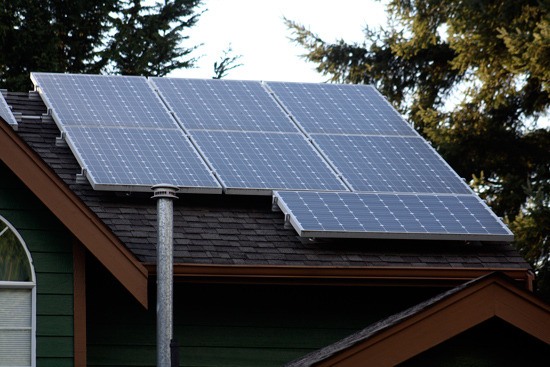It’s been 37 years since Kermit the Frog sang “It’s not easy being green” on the Muppet Show.
Unfortunately for felt puppets and environmental enthusiasts, not much has changed since the 70s – “being green” is still a difficult thing to be.
There have been many advances in environmentally sustainable/responsible/green technology in the last three decades, and although green tech is now more effective, it needs to become more affordable if is going to become popular with the general public.
A good example is the Tesla electric car. In 2010, when the cars were first available to the public, Teslas cost $109,0000 (before federal tax credits and gas savings). Now, in 2015, the “low-end” Tesla model 70D only costs around $75,000 (sure makes you want to go out and buy one right now, doesn’t it?).
While the price of the Tesla dropped even as the car models became even more environmentally friendly, I don’t see middle-class Americans lining up to buy one. It’s still just too expensive.
Other green technology, though, is becoming increasingly more affordable and accessible to the average American, even right here on the Plateau.
Solar power for a brighter future
Bonney Lake resident Mustafa Haziq had his solar panels installed on his roof in 2013, after reexamining how much of an investment he and his family wanted to make in green technology.
“I looked into solar power once, six or seven years ago,” Haziq said. “I’m not an environmental freak, who will at all costs do anything. There’s nothing wrong with that, but I wasn’t going to spend a ridiculous amount of money either to support the environment. I think there needs to be a balance.”
According to Haziq’s research in the mid 2000s, solar panels back then wouldn’t have paid off as an investment for 15 or 20 years.
Now, with local solar energy company Sunergy, Haziq said his investment in solar panels will be paid off in only six or seven years, less than half of what it was just 10 years ago.
“A six and a half year payback is pretty reasonable if you’re going to be in the house for a while,” Haziq said.
Haziq has 20 panels on top of his house, which end up covering around 64 percent of his family’s electricity usage every year.
The panels, and the inverter to convert the solar energy from a direct current to an alternating current, costs about as much as a brand-new, low-end car, Haziq said.
“That’s a huge amount of money. I’m the first one to say that,” Haziq said. “But, the huge reason I did this, on top of the payback that was six and a half years, is that Sunergy put it in the contract that if you don’t see that six and a half year payback, they will pay you the difference. Solar energy has come so far, and the climate is so reliable that contractors are willing to put in writing saying, ‘we will pay the difference if you don’t get the six and a half year payback.’”
Not only does Haziq feel financially secure about Sunergy’s contracted guarantee, but he also feels secure because of the money he is getting from Puget Sound Energy for his solar power.
PSE has a renewable energy incentive program, based on WAC 458-20-273. In short, if a household like Haziq’s uses solar panels and an inverter made in Washington, PSE will pay out $0.54 for each kilowatt hour generated by the solar panels, but not used by the family.
“That is where the huge payback comes, and that is why there is a six year payback,” Haziq said. “You’re getting paid five times as much as what you were paying for electricity. Those are the things people don’t know that I think would make them more willing to look into those facts more.”
Another fact Haziq said more people should research is that solar power does work in western Washington, despite the region’s reputation for cloudy and rainy skies.
“The big advantage here is the summers are so mild that solar panels are much more efficient. That is something people don’t realize,” Haziq said. “Places where it is very sunny tend to be very hot as well, so solar panels are less efficient. Here, it may be cloudy, but temperatures are also much lower, so the solar panels are much more efficient, because you get less resistance at lower temperatures. Electricity travels better.”
Reach Ray Still at rstill@courierherald.com or 360-825-2555 ext. 5058. Follow him on Twitter @rayscottstill for more news, pictures and local events.


